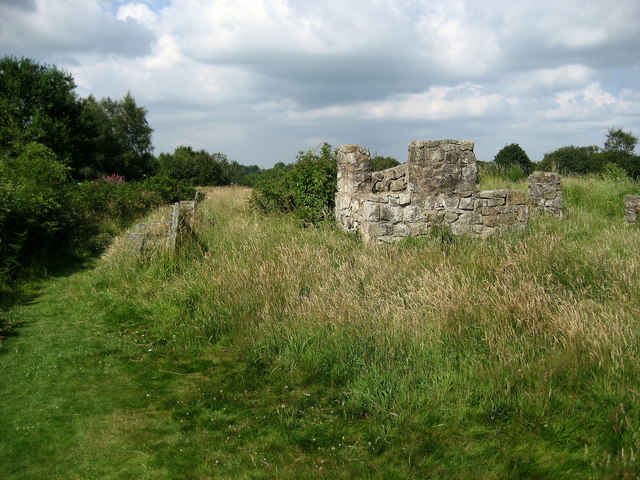Oswestry Race Course on:
[Wikipedia]
[Google]
[Amazon]
 Oswestry Race Course (also known as Oswestry Old Racecourse Common) is a historic racecourse on ‘Cyrn y Bwch’ hill close to Oswestry in
Oswestry Race Course (also known as Oswestry Old Racecourse Common) is a historic racecourse on ‘Cyrn y Bwch’ hill close to Oswestry in
"Oswestry Old Racecourse Course"
Date retrieved: 14/8/13 The common contains both informal and public footpaths, which are mostly easy grass paths with some steeper routes leading west. There is access for horseriders and a variety of picnic sites and seats. The Llanymynech to Chirk Mill section of Offa's Dyke Path (a national trail) crosses the common.
"Oswestry racecourse"
Date retrieved: 14/8/13
Venue for the ‘Sport of Kings’”
Date retrieved:14/8/2013 Oswestry Race Course was designated as a wildlife site in the 1999 Local Plan, and is officially registered as an area of common land.
 Oswestry Race Course (also known as Oswestry Old Racecourse Common) is a historic racecourse on ‘Cyrn y Bwch’ hill close to Oswestry in
Oswestry Race Course (also known as Oswestry Old Racecourse Common) is a historic racecourse on ‘Cyrn y Bwch’ hill close to Oswestry in Shropshire
Shropshire (; alternatively Salop; abbreviated in print only as Shrops; demonym Salopian ) is a landlocked historic county in the West Midlands region of England. It is bordered by Wales to the west and the English counties of Cheshire to ...
that was used by the Welsh and English to socialise and race horses. Covering an area of , the course was closed to racing in 1848 and is now an area of common land
Common land is land owned by a person or collectively by a number of persons, over which other persons have certain common rights, such as to allow their livestock to graze upon it, to collect wood, or to cut turf for fuel.
A person who has a ...
for recreation. It is a well travelled walking route because Offa's Dyke Path
Offa's Dyke Path ( cy, Llwybr Clawdd Offa) is a long-distance footpath loosely following the Wales–England border. Officially opened on 10 July 1971, by Lord Hunt, it is one of Britain's National Trails and draws walkers from throughout th ...
passes through the site, although the dyke itself lies to the west.
Location and facilities
The common is located west of Oswestry, by the B4580 road. A limited amount of parking is available at South Common, and Tanat Valley Coaches route No 78 from Oswestry also stops by the site.Shropshire Counci"Oswestry Old Racecourse Course"
Date retrieved: 14/8/13 The common contains both informal and public footpaths, which are mostly easy grass paths with some steeper routes leading west. There is access for horseriders and a variety of picnic sites and seats. The Llanymynech to Chirk Mill section of Offa's Dyke Path (a national trail) crosses the common.
History
This site is located on a hilltop called 'Cyrn y Bwch', which translates as ‘Horns of the Buck’ and was historically seen as a barrier between England and Wales. Racing is thought to have begun here in the early 17th century and the figure-of-eight track extended to . Race meets lasted up to three days and, in the town of Oswestry, signalled the beginning of drinking and social events. The infamous Jack Mytton was among the local characters closely involved in these events, at one time owning a stable of 40 horses. By the early 19th century, the racing was big business and it also brought large crowds, drinking, gambling and pickpockets and many people started to avoid the event. The arrival of the railways is thought to have contributed to the cessation of race meets as this enabled both horses and racegoers to travel further afield to the larger racecourses. The final meeting was held in September 1848, the same year that the Shrewsbury to Chester railway line opened. Today, significant evidence of the old racecourse remains, including the remains of the figure-of-eight course and grandstand.Greyhound Derb"Oswestry racecourse"
Date retrieved: 14/8/13
Site characteristics and wildlife
Due to its elevation, there are extensive views of the surrounding countryside from the site. It has a variety of different habitats including, scrub, woodland, heathland, ponds, wildflowers and unimproved, and marshy grasslands. This supports a wide assortment of birds and insects, includingwillow warbler
The willow warbler (''Phylloscopus trochilus'') is a very common and widespread leaf warbler which breeds throughout northern and temperate Europe and the Palearctic, from Ireland east to the Anadyr River basin in eastern Siberia. It is strong ...
, chiffchaff and linnets.BBC ShropshirVenue for the ‘Sport of Kings’”
Date retrieved:14/8/2013 Oswestry Race Course was designated as a wildlife site in the 1999 Local Plan, and is officially registered as an area of common land.
References
{{reflist Oswestry Defunct horse racing venues in England 1848 disestablishments in the United Kingdom Sport in Shropshire